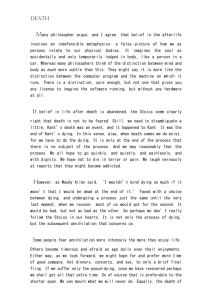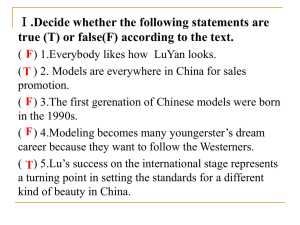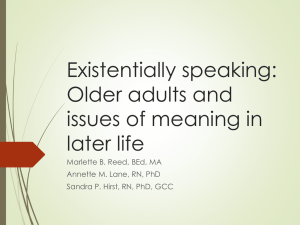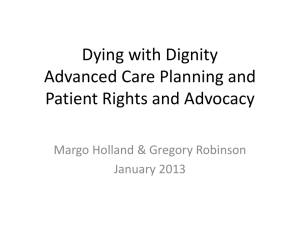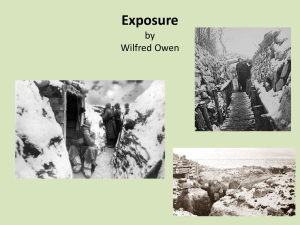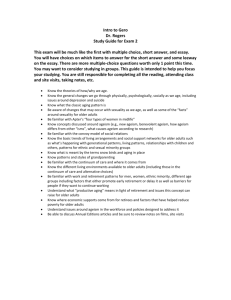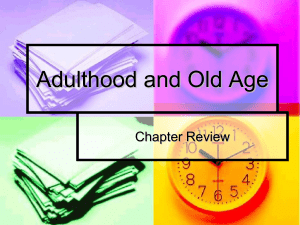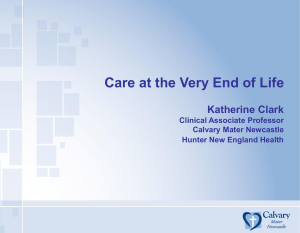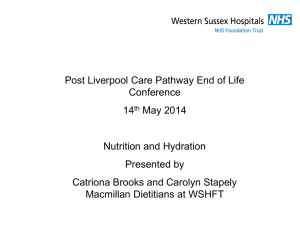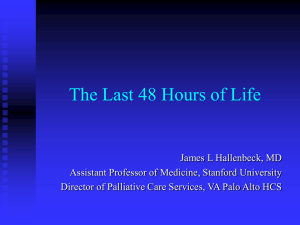MIDDLE SCHOOL CLIQUES
advertisement
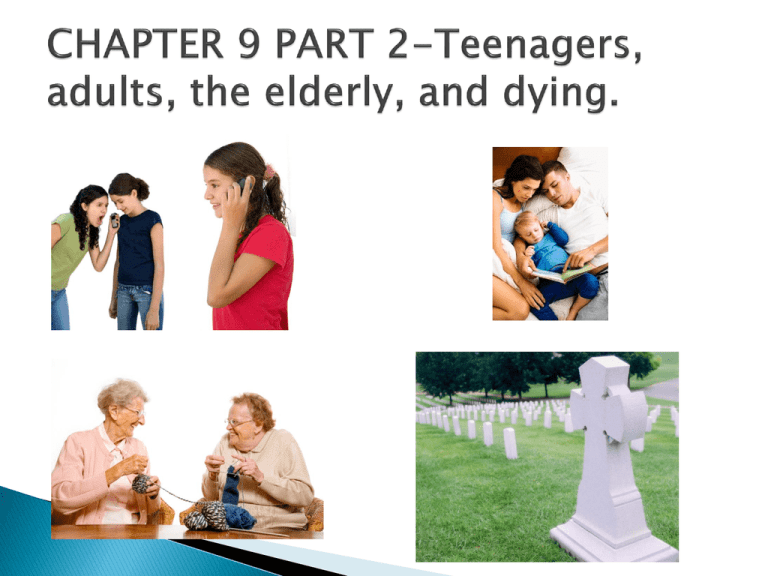
AN EXCLUSIVE GROUP Usually form between ages 10 & 15 Stem from an overwhelming desire to fit in Revolve around interests w/ friends and peers Deal in social power Not everyone is welcome excluding becomes the primary activity Peers serve as a panel of judges who define each other based on identifiable traits (clothing, music, activities, inside jokes, rituals) Formed around 1 or 2 leaders Have strict rules Feed off a super-sensitivity to criticism and a need to belong “I’M ALWAYS WORRIED” 35% of population Beautiful, athletic, charming, affluent Set the tone for the entire class Have the most friends – exclusive Socialize earlier than others both in and out of school Appear on fun Have to have cornered the market prestige (via romances, scholastic achievements, athletic exploits) from teachers and classmates “WHERE’S MY SELF RESPECT?” 10% of population Hoverers Mimic the dress and the rules Believe none that ½ a loaf is better than Welcome temporary inclusion “I’M FREE AND CONTENT” 45% of population Non-exclusive Small groups of several friends apiece Tend to feel most content Assorted measures of confidence and satisfaction Can be labeled into subcategories-math nerds, bandies, phantom tv people, etc. Nearly all surveyed felt resentment or even contempt for the popular group “I’M MAD AND I CAN’T TAKE IT ANYMORE.” 10% of population No friends Social hermits Envious Susceptible to adolescent depression, drug abuse, violent subcultures Often have hidden talent with time to hone that talent “The Breakfast Club” “10 Things I Hate About You” “American Pie” People Magazine’s Most Beautiful People Fashion Magazines “She’s All That” “Bring It On” “Popular” “Glee” Mean Girls http://www.youtube.com/watch?v=gZ _qXmxdgGM THE DARK SIDE OF CLIQUES Occupy the power center of the group Manipulate cliques as a means to bully Taught that “nice” is preferable Therefore, honesty and straight talk is avoided Use friendships as their weapon of choice Scapegoat, backstab, belittle, spread rumors, fights, sexually harass, exclude Use less emotion and more action Broadcast strengths Spread rumors Fight Use weapons Deliberate humiliations Sexual harassment BEING TEASED IS SOMETIMES BETTER THAN BEING IGNORED THE BIGGEST BULLIES ARE IN THE POPULAR CROWD, SO THEY CAN GET AWAY WITH IT CLOTHES POPULAR AND LOOKS MATTER DOES NOT EQUAL NICE BOYS… 1. Athleticism 2. Stature 3. Sense of humor GIRLS 1. Looks 2. Clothes 3. Vivacious or bubbly personality Sense of belonging Self-worth Shared interests Confidence Closeness-help w/ problems Peer pressure Conformity-the enemy of proper identity formation Drug use-type of clique Bullying Lack of Diversity-ethnic, racial, religion. link Stage Time Period Parents’ Tasks Image-Making Pregnancy Begin to imagine themselves as parents Nurturing Birth to Age 2 Become emotionally attached to child May question relative worth of other priorities Authority Age 2 to Ages 4-5 Determine rules Clarify role as authority figure Interpretive Ages 4-5 to Age 13 Rethink their role as parents Decide what knowledge, skills, and values child needs Interdependent Adolescence Establish boundaries Find disciplinary methods appropriate for teens Departure Child Leaves Home Evaluate their parenting 1967 Used naturalistic observation and interviews. Four Important Dimensions of Parenting 1. Disciplinary strategies 2. Warmth and nurturance 3. Communication styles 4. Expectations of maturity and control Authoritarian Permissive Authoritative/democratic Uninvolved Authoritarian parent parent who relies on coercive techniques to discipline the child and displays a low level of nurturance. ◦ Coercive techniques include threats or physical punishment ◦ Places firm limits and controls on the child ◦ Little verbal exchange between the parent and the child Effects on the child ◦ Does not exhibit a strong social responsibility or sense of independence ◦ Appears anxious about social comparison ◦ Does not initiate social activity ◦ Displays poor communication skills ◦ Boys—generally more aggressive ◦ Girls—generally more dependent ◦ In general appear unhappy Effects extending to adolescence ◦ ◦ ◦ ◦ Less advanced moral reasoning Less prosocial behavior Lower self-esteem Poorer adjustment to starting school Permissive parent parent who sets few limits on the child’s behavior ◦ Makes few demands on mature behavior ◦ Allows child to make own decisions about routine behaviors including TV viewing, bedtime, and mealtimes ◦ Either moderately nurturant or cool and uninvolved Effects on the child ◦ Does not exhibit a strong social responsibility or sense of independence ◦ Displays low self-control ◦ Displays low self-reliance ◦ Displays a tendency to expect to get own way Authoritative parent parent who sets limits on a child’s behavior using reasoning and explanation and displays a high degree of nurturance ◦ Expects child to behave in a mature manner ◦ Uses rewards more than punishments ◦ Communicates expectations clearly and provides explanations to help the child understand the reasoning behind the expectations ◦ Listens to what the child has to say ◦ Encourages dialogue between the parent and child Effects on the child ◦ ◦ ◦ ◦ ◦ ◦ ◦ ◦ Self-reliant Socially responsible Friendly with peers Cooperative with adults Independent Energetic Achievement oriented High degree of self-control Effects extending to adolescence ◦ ◦ ◦ ◦ More pro-social behaviors Fewer problem behaviors (i.e. substance abuse) Greater academic achievement Higher self-confidence Parent sets demands and guidelines on the child’s behaviors ◦ Child is aware of the responsibilities individuals have toward one another when they live in social groups ◦ Child is better equip with an understanding of how to sort out the social world Parental demands are accompanied with reasonable explanations ◦ Child is more likely to accept the limitations of his or her actions Parent takes child’s responses into account and shows affection toward the child ◦ Child is likely to acquire a sense of control over his or her actions ◦ Child is able to derive a sense of self worth Parents are not around (choice or circumstance.) Parents are there but don’t act like it. Effects: Poor social skills Self-esteem issues Anger Depression Substance Abuse Many similarities w/ authoritarian. ???? -Parents may use more than one parenting style Tend to get “easier” with younger kids Different styles for daughters/sons Style is often determined by their view of their own parents-mimic what was good, avoid what they considered bad parenting Also known as discrimination against the elderly. 49 Do you say “aaawww, isn’t she cute?” when you see an older woman doing something a younger person might do (e.g., having fun, kissing a man)? Do you think older people aren’t appealing because of their physical appearance (e.g., loose skin, wrinkles, gray hair, weight around the middle)? 50 Do you think all old people are wise? Are you uncomfortable talking to elders? When you talk to older people do you look them in the eye? Are elders all “old people” to you or can you see each as an individual? 51 The Social Construction of Aging ◦ Youth, speed, production ($) are American ideals ◦ Physical and mental weakness are stigmatized feel ashamed or embarrassed when weak, ill, or need help ◦ You have done something WRONG if you become ill or old or poor 52 In the 1960s, Robert Butler coined the phrase ageism, which he defined as: "A process of systematic stereotyping of and discrimination against people because they are old, just as racism and sexism accomplish this with skin color and gender. Old people are categorized as senile, rigid in thought and manner, old-fashioned in morality and skills… 53 . . . . Ageism allows the younger generations to see older people as different from themselves; thus they subtly cease to identify with their elders as human beings" (See R. Butler, Why Survive? Being Old in America, 1975 - item no. 71 of this bibliography.) 54 Ageism can be coupled with other forms of oppression sexism, racism, beautyism… a powerful combination ◦ It all adds up to the beliefs that – AGING is bad AGING is ugly AGING is to be avoided AGING is a social and economic crisis We need to FIGHT AGING 55 “A man's face is his autobiography. A woman's face is her work of fiction.” Oscar Wilde 56 57 Lots and lots and lots of examples in daily life… ◦ ◦ ◦ ◦ ◦ ◦ ◦ Conversations Jokes Television Birthday cards Newspaper Magazines Music lyrics 58 Music http://music.msn.com/music/features/bandsofthelivingdead ◦ Is music only for the young? ◦ Rockers and rappers who are in their 40s, 50s, and 60s are referred to as “living dead” -- Writer states they “refuse to die” ◦ Old men rockers are one thing but old women? 59 60 61 DGKS Prof. Dr. VOK 62 63 64 90 80 70 60 50 Major Minor 40 30 20 10 0 20-54 50-64 65+ Postitive 1.Perfect grandparent; 2.Golden ager 3.John Wayne conservative 4.Liberal matriarch/patriarch 5.Activist 6.Small–town neighbour. The negative stereotypes were the: 1.Despondent 2.Vulnerable 3.Severely impaired 4.Shrew/curmudgeon 5.Recluse 6.Mildly impaired 7.Self–centred 8.Elitist Prejudice and discrimination on TV ◦ Less than 2% of prime time television characters are 65% - (it is slowly changing --- is it?) ◦ Majority of film and TV writers are white men under 40 ◦ Only 1/3 of older characters on prime time TV are women ◦ 70% of older men and 80%+ of older women on TV are portrayed disrespectfully, treated with little if any courtesy, and looked at as “bad” Examples from Ageism in America: Status Reports of Ageism in America by The Anti-Ageism Taskforce at The International Longevity 67 The truth is that most older people are more vulnerable due to losses ◦ Physical losses May not be able to walk, drive, grocery shop, clean house, talk on telephone, see instructions or watch television, etc. ◦ Social losses Loss of parents, spouse, siblings, friends Coupled with physical, income, and cognitive, may lose ability to get to and enjoy social activities ◦ Income losses Retirement ◦ Cognitive losses Some processing changes and memory loss are normal 68 And sadly enough, some people prey on older people’s vulnerability ◦ These people can be known to the older person such as family members, other care givers, or strangers ◦ Elder Abuse! 69 Pioneered research with the dying in 1960s ◦ Difficulty in access to dying patients hindered by physicians ◦ Patients were usually surprised, amazed, and grateful; relieved to share their last concerns and expressing their feelings ◦ Interviewed 400 dying persons over a 10 year period Her work resulted in a book ◦ On Death and Dying (1969) usual stages of dying Shock/Denial Anger Numbness, shock, withdrawal and cognitive denial Can take from few seconds to few months 1% of terminally ill people stay in that stage Envy and resentment of those whose lives will continue Anger can be expressed towards everyone they encounter in various forms such as complaints Important to see the dying person as a unique human being engaged in the process of grieving rather than somebody who is threatening or just a ‘patient’ Bargaining ◦ Making promises (usually towards spiritual figures) in exchange to more time to live ◦ It is natural and healthy way to cope with the reality of approaching death Depression ◦ Acute depression, the dying regrets past failures and mistakes that can not be corrected ◦ Grief about the lost time ◦ Recognition of approaching death Acceptance ◦ Without anger or depression ◦ ‘it’s my time now, and it’s all right’ without defeat or disappointment ◦ In our culture the dying person is often drowsy, withdrawn, drugged, and asleep much of the time ◦ Often does not like to engage in conversation ◦ But, it is important to show that others care through physical presence ◦ The dying often realizes our connectedness to all living/dying beings Positive aspects Critique Focus on humane treatment of the dying and their needs Encourages the caregivers to view the world through the eyes of the dying Learning from the dying about ourselves, our values and our own search for values Can apply to other very stressful events-war, terrorism, etc. Lack of empirical support in scientific literature Restrictive nature of the stages Problem with the way it was applied by healthcare professionals – annoyance if the dying people do not move neatly through the expected stages youtube
